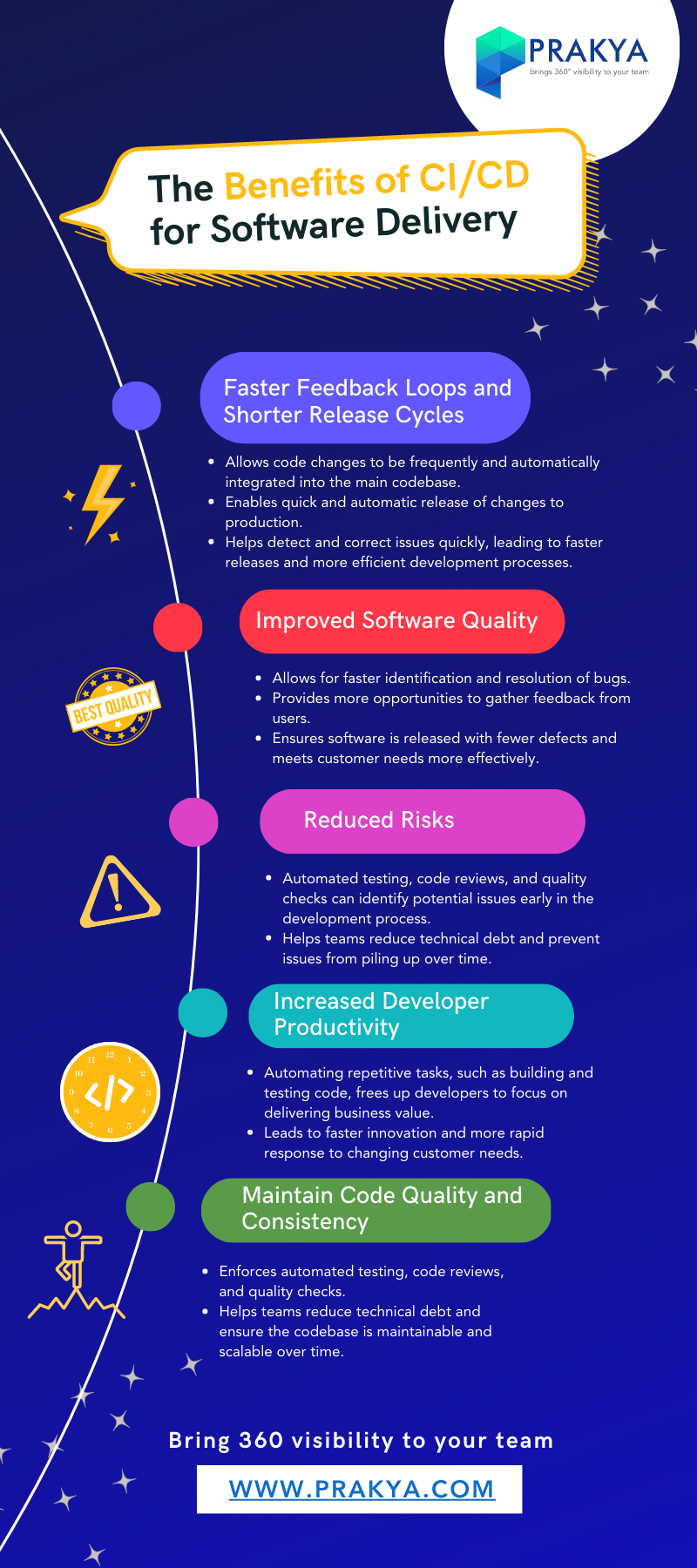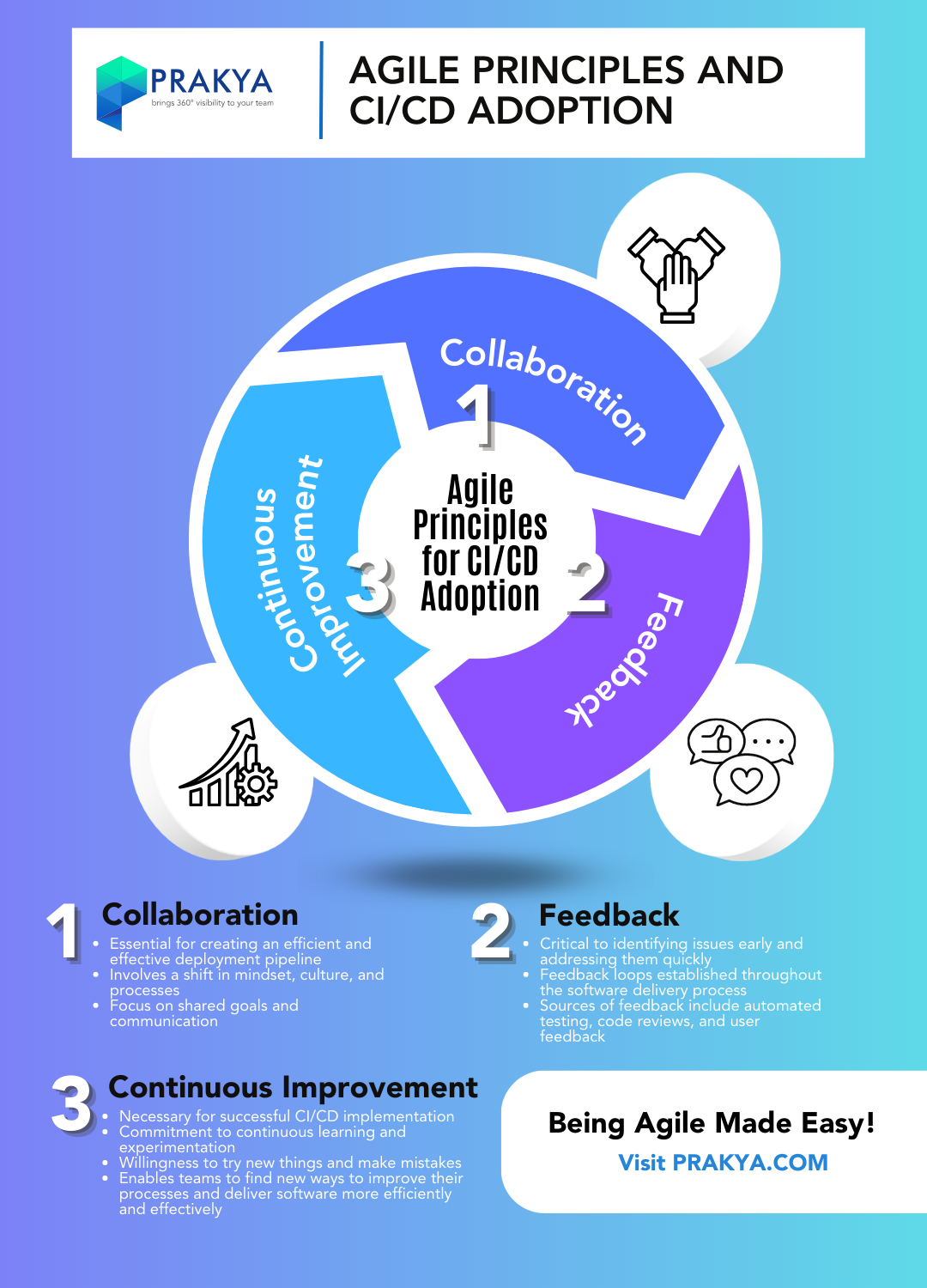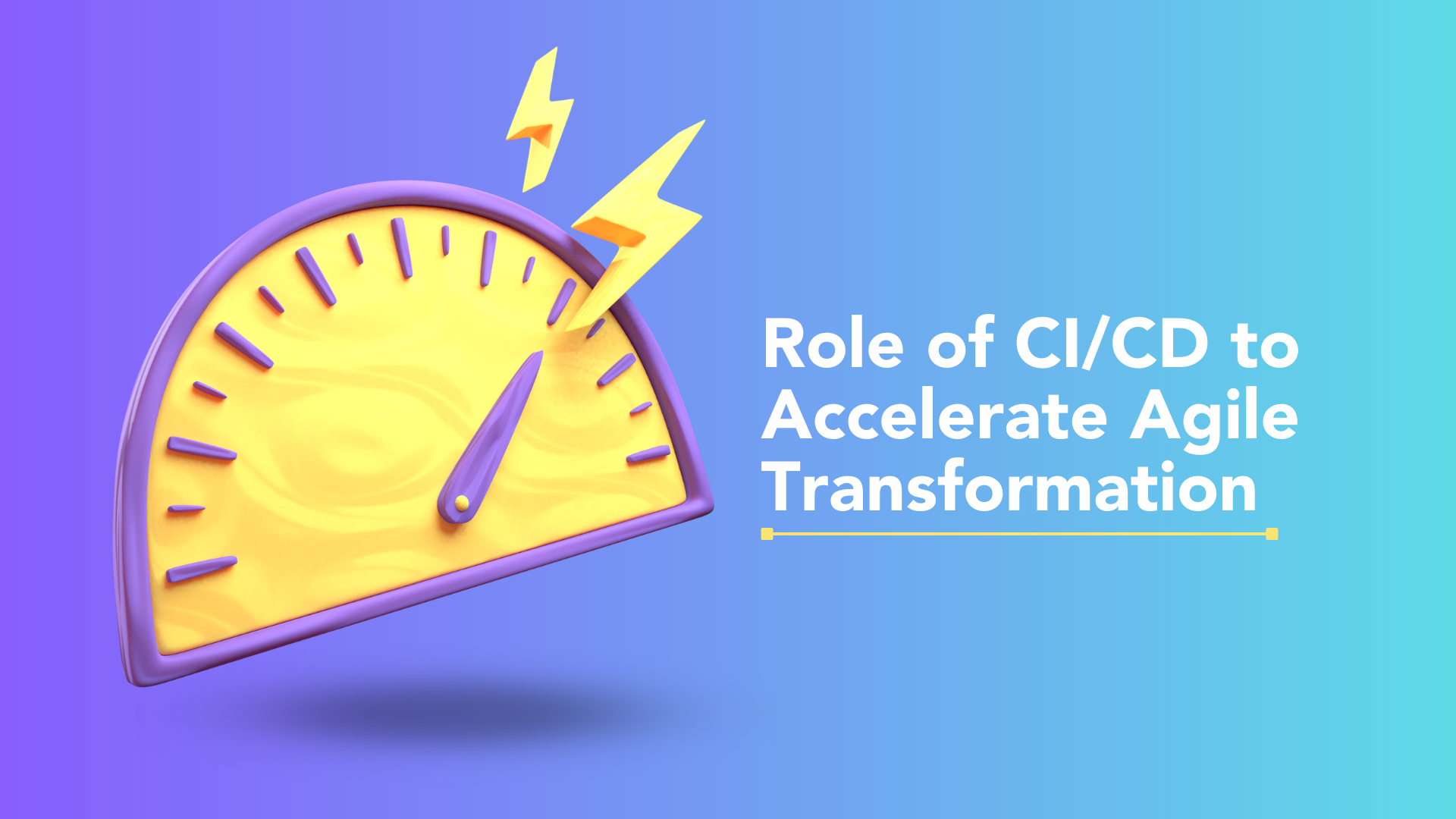Before diving into the topic of this blog, I must admit that the agile insect in me tends to connect everyday observations with agile concepts so that I can use them as simple examples to relate to complex topics in my articles.
During my evening walks, I often pass by a bakery and the aroma of the freshly baked goods tempts me to forget about fitness and indulge in their offerings. However, that’s not what I want to write about here. Instead, I want to use this scenario to relate the CI/CD concept. So, let’s jump on and imagine that you are a “baker”.
Imagine that you’re a baker, and you run a small bakery in your town. Your customers love your bread, and you’re always experimenting with new recipes to keep them coming back for more. One day, a customer asks if you could make a gluten-free loaf, and you’re excited to try it out. You spend hours researching and testing different ingredients and techniques, and finally come up with a recipe that you’re proud of.
However, when you try to bake the gluten-free loaf in larger quantities, you start to run into problems. The bread doesn’t rise as well as your other loaves, and some of the batches come out too dry or too dense. You realize that if you want to sell this new type of bread, you’ll need to be able to bake it consistently and reliably.
Just like in baking, software development requires a lot of experimentation and testing to get things right. But once you’ve found a recipe (or code) that works, you need to be able to reproduce it consistently and reliably. That’s where the continuous integration and continuous deployment pipelines of CI/CD come in. With the right tools and infrastructure in place, you can automate repetitive tasks, test your code quickly and thoroughly, and deploy updates to your customers quickly and with confidence.
In your bakery, this might mean investing in new equipment or hiring extra staff to help you scale up production. In software development, it means adopting Agile principles, collaborating across teams, and continuously learning and improving. By embracing CI/CD, you can accelerate your Agile transformation and deliver working software to your customers rapidly and continuously, just like you would deliver fresh bread to your loyal customers every day.
With this, let’s start with what CI/CD is all about and why it’s important for Agile Transformation.
What is CI/CD and Why It’s Important for Agile Transformation
Continuous Integration/Continuous Deployment (CI/CD) is a set of practices that streamline and automate the software delivery process. In this article, we will explore the importance of CI/CD in Agile Transformation, which emphasizes delivering working software to customers rapidly and continuously.
What is CI/CD?
CI/CD stands for Continuous Integration/Continuous Deployment. It involves automating repetitive tasks, such as building, testing, and deploying software. By automating these tasks, developers can focus on delivering business value, while the system takes care of the rest.
Why is CI/CD important for Agile Transformation?
CI/CD is essential for Agile Transformation because it enables teams to release software more frequently, which benefits both customers and stakeholders. By reducing the time it takes to deliver software, teams can increase software quality and reduce the risk of releasing buggy software.
Additionally, CI/CD enables faster feedback loops and shorter release cycles, which facilitate faster iteration and improvement of software quality. This helps teams to maintain code quality and consistency, reducing technical debt through automated testing, code reviews, and quality checks.
Implementing CI/CD: Key Shifts and Collaborative Efforts
Implementing CI/CD requires a significant shift in mindset, culture, processes, tools, and infrastructure. It also requires collaboration across development, testing, and operations teams to achieve successful results.
Implementing CI/CD involves several key shifts that teams must make to achieve successful results:
- Continuous Integration and Continuous Deployment (CI/CD)
To successfully implement CI/CD, organizations must move towards continuous integration and continuous deployment. This means that developers regularly merge their code changes into a shared repository, which is then built and tested automatically.
Once the code changes have passed through testing and validation stages, they are automatically deployed to production. This approach enables faster feedback loops and shorter release cycles, improving software quality, reducing risks, and allowing more frequent releases.
- Automation
To implement CI/CD successfully, teams must embrace automation. Automating repetitive tasks, such as testing and deployment, frees up developers to focus on delivering business value.
It also maintains code quality and consistency, reducing technical debt through automated testing, code reviews, and quality checks.
- Culture Shift
Another crucial shift required for implementing CI/CD is a change in culture. Organizations must adopt Agile principles, change readiness, and continuous learning. They must also be willing to experiment and take risks. This approach allows teams to quickly iterate and improve, ultimately leading to better software quality and faster delivery.
Collaborative Efforts for Implementing CI/CD
Effective implementation of CI/CD also requires collaboration across development, testing, and operations teams. The following collaborative efforts are necessary:
Cross-Functional Collaboration
Development, testing, and operations teams must work together to ensure that code changes are thoroughly tested and validated before being deployed to production.
This approach reduces the risk of introducing errors and ensures that software quality is maintained throughout the development process.
Right Tools
The right tools are essential for successful implementation of CI/CD. Version control, automated testing, and a reliable deployment pipeline are crucial components of any CI/CD implementation.
Continuous monitoring and measurement are also essential for tracking progress and identifying areas for improvement. Ongoing maintenance and optimization are necessary for efficient and effective software delivery.
The Benefits of CI/CD for Software Delivery
Continuous Integration and Continuous Deployment (CI/CD) provides several benefits to software delivery, including:

By implementing the right tools, including version control, automated testing, and a reliable deployment pipeline, teams can successfully implement CI/CD and reap the benefits of faster, higher-quality software delivery.
Adopting CI/CD for Agile Transformation: Agile Principles and Change Readiness
CI/CD is an essential element in Agile transformation, enabling teams to deliver high-quality software faster and more frequently. However, successfully implementing CI/CD requires a strong foundation in Agile principles, as well as a readiness for change.

Change Readiness and CI/CD Adoption:
In addition to Agile principles, change readiness is also critical to successful CI/CD implementation. Teams must be willing to embrace change and adapt to new processes and tools. This change can be difficult, but it is necessary for continuous improvement and growth. Teams must be open to trying new things, experimenting with new approaches, and learning from their mistakes.
To successfully adopt CI/CD, teams must have a strong foundation in Agile principles, be open to change, and committed to continuous improvement. By embracing Agile principles and being change-ready, teams can achieve the benefits of CI/CD, including faster feedback loops, improved software quality, and reduced risks.
Implementing CI/CD Successfully: The Right Tools and Continuous Improvement
To ensure successful implementation of CI/CD, teams must have the right tools and infrastructure in place. Below are the essential tools for implementing CI/CD
Version Control
Version control is a crucial tool for managing code changes and ensuring code consistency. It allows teams to work collaboratively on code without worrying about conflicts and versioning issues.
Popular version control tools for CI/CD environments include Git, Bitbucket, and SVN.
Automated Testing
Automated testing is an important tool for successful CI/CD implementation. It helps to catch bugs and errors early in the development process, reducing the risk of releasing defective software. Automated testing can include unit testing, integration testing, and acceptance testing.
There are several testing frameworks and tools available, such as JUnit, TestNG, Selenium, and Cucumber.
Deployment Pipeline
A reliable deployment pipeline is crucial for successful CI/CD implementation. The deployment pipeline should be automated and able to handle multiple environments, such as development, testing, staging, and production.
Popular choices for deployment pipelines in CI/CD environments include Jenkins, CircleCI, and Travis CI.
Continuous Monitoring and Measurement
- Metrics like code coverage, build times, and deployment frequency can provide insight into the effectiveness of the CI/CD pipeline.
- Teams should regularly review these metrics and make adjustments to improve efficiency and effectiveness.
Ongoing Maintenance and Optimization
- Teams should continuously review their CI/CD pipeline and make adjustments as needed.
- This can include optimizing build times, improving test coverage, and adding new tests. Regular maintenance can also help prevent technical debt and keep the pipeline running smoothly.
Implementing CI/CD is crucial for organizations to achieve Agile transformation and deliver software quickly and continuously. Success requires a shift in mindset, culture, and processes, as well as collaboration across teams. Automating repetitive tasks, maintaining code quality, and adopting Agile principles are essential for successful implementation. Continuous monitoring, measurement, maintenance, and optimization are necessary for efficient and effective software delivery.





